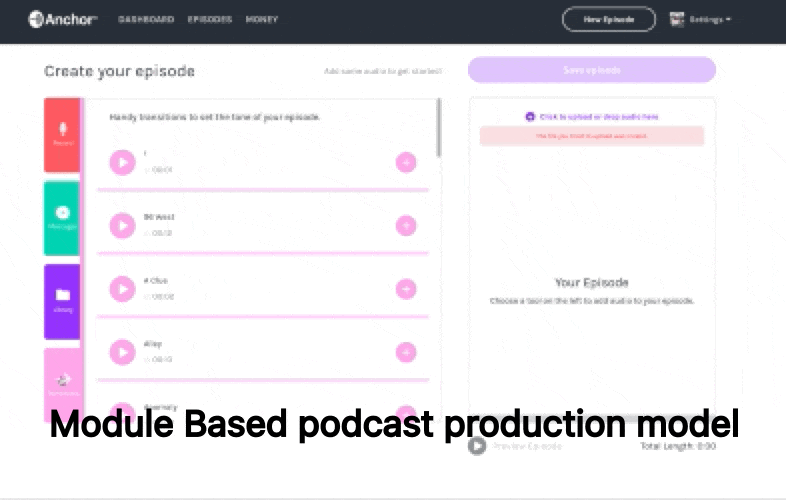With this second golden age of podcasting, podcast production is getting easier and easier. Anchor.FM (recently acquired by Spotify) allows users to use a free mobile app, or web browser, and any microphone, and allows anyone to get started podcasting without any real need of knowing “editing.” And accounts/hosting is free (at least at the time of writing this post).

The reasoning for not needing ‘editing’ is in their module based episode design. Using this model, it forces users to think about what they want say in chunks, as opposed to one monolithic recording (or rambling) that you would need to edit after the fact. You stack your segments in the order you want, add transitions (provided) between segments, or (in the app) you can even use snippets of music from iTunes or Spotify underneath a bit you recorded.
Once you build episodes, you can even allow Anchor to start distributing your show to most of the major platforms or, just keep it on your Anchor.FM page and link people to your show (say in Canvas).
As a way to introduce podcasting to a class with minimal technology requirements, or equipment, and having students focus on the structure of their story; this can be a great tool for an educator looking to begin integrating podcasting into a class.
Once an episode has been complied and “published,” it is downloadable. So theoretically, if a student wanted to use Anchor to create their show (say for a class in Canvas), but did not want it to live in the open internet, they could publish a show, download it, then remove it from the pubic Anchor.FM page.
But if you do like to record more monolithicly using a more robust audio editing tool, like Audacity, you are able to upload audio to an account page through the browser. An example of this kind of production, as well as what a show page looks like can be seen with The Analog Explorer podcast.


You must be logged in to post a comment.